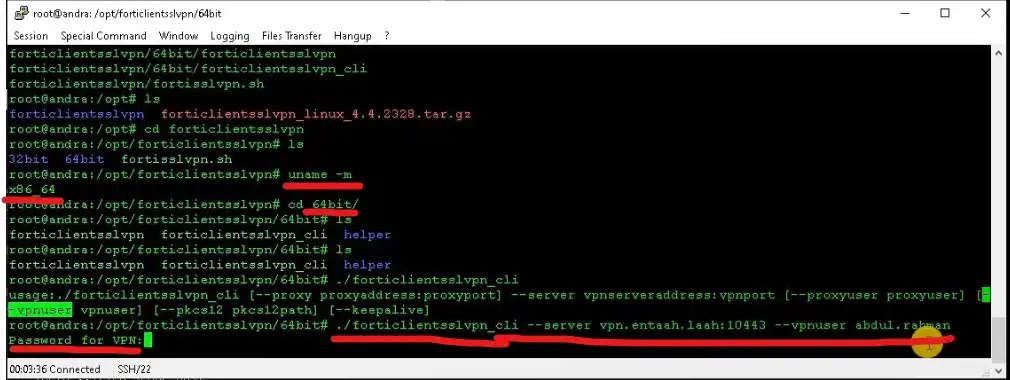


The installation and configuration of this tool are discussed below for different operating systems. Simply connect to a VPN: Connect to a VPN using an authentication realm: Store password securely with a pinentry program: Connect with a user certificate and. Enabling a VPN connection is mandatory in all these cases, and the VPN must be established using FortiClient. All of the packages itself should also work on debian since it has the file installer is in the. If you are not at your center or working abroad (whether at home or in another country), you must use the VPN to connect with our servers (except for SSH Terminal and Remote Desktops, as explained above). If you want more information about the use of the Remote Desktops you can check this page. (This will also install dependencies openfortivpn and network-manager-fortisslvpn.) Then you can click Edit connections in network manager (right click the wifi icon), + to add a new one, select type Fortinet SSLVPN under the VPN heading. These Remote Desktops will be destroyed after 36 hours, unless you log out of the desktop before reaching that limit or restart the countdown. sudo apt install network-manager-fortisslvpn-gnome. The container uses the forticlientsslvpncli linux binary to manage ppp interface. Remote Desktops, which provide a Linux desktop with direct access to the directories and command terminal of FinisTerrae III. Connect to a FortiNet VPNs through docker. Under the Tools section, you have an SSH Terminal that opens a command terminal directly on FinisTerrae III. As explained at First steps section if you are accessing CESGA’s resources from an authorized center, you do not need to configure the VPN.Īnother way to access our servers without using the VPN is through the User Portal To configure VPN on FortiGate, go to GUI IPsec Wizard -> Template Type: Remote Access -> Remote Device Type: Client-Based, Cisco.


 0 kommentar(er)
0 kommentar(er)
